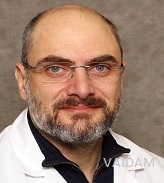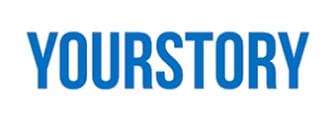Listing popular specialists:

Consultant, 20 years of experience

Transthoracic echocardiography Transesophageal Echocardiography Stress Echocardiography ECG Holter Monitoring, Ambulatory blood pressure monitoring Interventional Cardiac Procedures including Cardiac Catherization, Angiography & angioplasty/stenting Trans radial complex coronary interventions

Consultant, 16 years of experience

Heart rhythm problems Ablations Cardiac device implants
Our Services for Crt D Implant Cardiac Resynchronization Therapy in United Arab Emirates
Transparent - Professional - Without Hassles
A CRT-D is an implantable cardiac resynchronization therapy (CRT) defibrillator for patients with heart failure which monitor heart's rhythm, detects irregularities and corrects them with electrical impulses.
It's called a cardiac resynchronization therapy pacemaker (CRT-P) or “biventricular pacemaker.” The other is the same device, but it also includes a built-in implantable cardioverter defibrillator (ICD). This type is called a cardiac resynchronization therapy defibrillator (CRT-D).
Yes, CRT-D is very safe procedure. The devices being used for the procedure is being approved by FDA.
Usually there are two types of CRT device one is called CRT-P ( cardiac resynchronization therapy pacemaker) and the other is same device but it also includes built-in implantable cardioverter defibrillator.
CRT-D device is a special device for heart failure patients who are also at high risk for sudden cardiac death. CRT-D devices treats the fast rhytms of heart which can result in sudden cardiac arrest. If the device which are sensing the heartbeats are very fast then it will deliver a shock to heart, that shock will stop the abnormal rhythm of heart.
Heart failure is a chronic and progressive disease the early use of CRT therapy will help you in keeping alive for longer time. If you are having any symptoms the CRT device has the ability to improve your health which in turn will improve your life also. CRT device does not totally cure the heart failure but many patients who have received CRT will feel better and get relief from symptoms and they will get more energy in participating in daily activities.
The median survival after device implantation is 4.62 years for CRT-P and 5.15 years for CRT-D.
In this procedure the surgeon will insert three leads into the major vein near your collarbone and by using x ray the surgeon will guide the leads through the veins and then place them into the upper and lower chamber of heart. At last, CRT-D is being implanted by making an incision below the skin.
CRT-D is a special device which is used for treating high risk of getting death due to cardiac disease. This device functions like normal pacemaker for treating the heart rhythms. This device also delivers small electrical impulses to the left and right ventricles and also helps them to contract simultaneously.
CRT is a treatment which is being done for make your heart beat in right rhythm this device uses a pacemaker which restores the normal timing pattern of heartbeat. This pacemaker coordinates with the timings of both upper and lower heart chambers.
You can go for CRT-D placement if your LVEF≤ 35% or moderate to severe if it is seen on any latest echocardiogram or any contrast ventriculogram or MRI.
The surgery takes around two to four hours to complete.
A small incision, approximately 2 inches, will be made in the upper chest. Three leads (thin insulated wires) will be guided through a vein and into the heart which will connect the leads to the implanted heart device, test the device, and program the settings.
On a regular basis the doctor will check your CRT device and overall health. The follow up plan includes the regular visit to the dentist, it is important for you to attend the follow up visit of doctor. Doctor and nurse will use programmer to make sure that CRT device is working properly to treat your heart. Your doctor can get important data from your CRT device—such as whether it delivered high-energy therapy or how much energy is left in the battery.
Your doctor will give you the instructions about your prepare yourself for surgery, you will be advised to stop taking the blood thinner medications for few days before surgery. You will also be advised to not eat or drink anything for 12 hours before surgery.
CRT-D is very simple surgery and it lasts for about two to four hours, it is not an open heart surgery. You will get antibiotics to reduce the risk of infection.
In the process of CRT-D implantation the surgeon will insert three leads into the major vein near your collarbone. By taking x ray for visibility the surgeon will guide the leads through your vein and then place them into the upper and lower chamber of heart.
The recovery after the procedure will take few days to months, while you are recovering the you will be allowed to avoid strenuous activities such as lifting and using your upper body by doing these it ensures that you have the time to attach your heart tissue.
Having a CRT device can be a major turning point in your life. Afterward, you may feel sad or worried. It’s an event that may change your thoughts and feelings about your health. Some people may feel vulnerable at first because they depend on an implanted device.
The sensation of CRT therapy varies from person to person and depends on the type of therapy your device delivers. When a CRT-D device shocks the heart in order to slow down a fast heartbeat, it uses higher energy. This gives a feeling that some people describe as a “kick in the chest.”
Your permanent Medical Device Identification Card will be mailed to you a few weeks after your implant. This wallet-sized card helps identify you as a patient.
Patients with a CRT device can feel confident and safe when traveling. The Medical Device ID card that you receive with your device helps alert medical and security personnel that you have an implanted CRT device. It’s important to carry your card when traveling because the device contains metal parts that may set off airport security metal detector alarms.
Usually having a CRT device does not prohibit you from driving, although you may be asked to wait to drive during the early stage of recovery. In some cases, restrictions are necessary.
Sexual intimacy is not a medical risk in patients with CRT, because the natural heart rate increase that occurs during sex is the same as the heart rate increase when you exercise.
It is advisable to not remove CRT-D till you have got an infection.
You have to stay in hospital for one or two days after the surgery.
You have to monitor the healing of your incision. Your arm’s range of motion will probably be limited until the wound is completely healed. In some patients, the CRT-D forms a small, visible bulge underneath the skin.






NABH Certified Healthcare Discovery Platform
Vaidam is NABH certified healthcare discovery platform that will connect you to top-notch medical experts, hospitals, wellness options, and trusted travel partners to help identify and make the right healthcare choices.

Researched & Personalized Treatment Plan - Under One Roof
You can search for the best hospitals, read about them, view photographs of the facilities at the hospitals and the places at which the hospitals are located, and check the cost of treatment.

Quality Treatment Within Your Budget
As soon as you post an enquiry, the patient relation team will collect details from you, share them with the doctors and hospitals on Vaidam's panel, and get a personalized treatment plan. We research to get quality treatment within your budget.

Treatment to Travel
Vaidam concierge assists patients, to get medical Visa, the best airline fares and arrangements for your stay. Our concierge also helps you with daily travel, language, and food concerns. Vaidam does everything to be your perfect host. All of Vaidam’s services are free of cost to patients.

International Reach
Vaidam Health has network in 15+ countries, which includes India, Turkey, UAE, Germany, South Korea, Thailand, Malaysia, Spain.
Note: Vaidam Health does not provide medical advice, diagnosis or treatment. The services and information offered on www.vaidam.com are intended solely for informational purposes and cannot replace the professional consultation or treatment by a physician. Vaidam Health discourages copying, cloning of its webpages and its content and it will follow the legal procedures to protect its intellectual property